I woke up about 6:30 this morning, and it was obvious we were still under way. I went to open the curtains and looked out and saw nothing but water. In about 10 minutes, however, I saw some very curious waves breaking and deduced that we had just passed the reef that surrounds Bora Bora. It was kind of weird to see the waves breaking with no land in sight. I spotted land very soon, however, and before long it was obvious that we were in the Bora Bora lagoon. The Paul Gauguin was anchored there already; David and I were interested in that because we have often talked about taking one of their cruises. It was very small compared to our ship; that could be good and bad: good because of fewer passengers, bad because not so stable in rough water.
Bora Bora is an extinct volcano nearly completely surrounded by a coral reef
. In addition, there are dozens of small islands called motus that were formed by sand and dusts that got caught in the reef and formed masses large enough for plants to colonize them. The airport for Bora Bora is on a motu, and so are many of the resorts.
Our tour was scheduled for 11:30, which meant we didn't have to go ashore until 10:30 or so. So I had time to do Sit and Be Fit, and we had a leisurely breakfast before going down to board the tender. Sit and Be Fit is held in a lounge called the Crow’s Nest on the top of the ship, and we had a good view of the tenders going to and from the dock. It looked like one of the tenders was towing a water skier, which seemed strange to say the least. When we got onto the tender and under way, I found out what I had really seen: young men from Bora Bora were paddling their canoes out and riding the waves from the tenders. I managed to get a couple of pictures.
We got to the dock and disembarked
. We soon found the guide for our tour and boarded the bus – really a truck with bucket seats in back. It had plastic windows that were all set down, but could be lifted up and closed in case of rain. At least there was no glass in the way for pictures out of the side of the bus. The guide told us that there is one road in Bora Bora that goes all the way around the island and is 19 miles long. He said the tour would only take two and a half hours. He was wrong – it took three and a half. Our first stop for a photo opportunity was at a church that was very picturesque and had good views of the mountains. There are two main mountains on Bora Bora, Mt. Pahia and Mt. Otemanu. The guide claimed that no one has ever climbed to the top of Mt. Pahia, but there was a sign in town warning you to go with an accredited guide if you wanted to climb Pahia or Otemanu, so we kind of doubt his claim.
The next stop was at a place where pareos are made, and the workers demonstrated the traditional method of dying the patterns into the cloth using metal and plastic forms and sunlight
. A demonstration of different ways of tying pareos was also given. They are very versatile, indeed. Fresh fruit of the island was available (bananas, papayas, mangos, guava, coconut); I had some and it was delicious. Pareos and other handicrafts were on sale, and I found that all the people in Tahiti who said things are more expensive on Bora Bora were not telling the truth, at least as far as the tourist trade is concerned.
There were several more stops for pictures: on top of a hill and at Matira Beach. Matira Beach is the best beach on the island, so called because it is in the Matira district; it was named for an Englishwoman named Matilda who came to Bora Bora and was so much loved by the islanders that they decided to name a district after her. However, there is no 'l’ or ‘d’ in the Tahitian alphabet, so they substituted an ‘r’ and called it Matira. It is a wonderful white sand beach with great views of the lagoon and the island.
We drove by many resorts, some of them closed due to the economy
. Our guide John kept telling us that the only real employment on Bora Bora is in support of tourism. We drove by the waste water treatment plant where they take the sewage and treat it to create gray water that is piped back to the resorts for use in watering plants and lawns. They also have a desalinization plant, which is necessary because unlike Tahiti, Bora Bora doesn’t have enough fresh water to support the population.
We drove by the house Marlon Brando had on Bora Bora, which was next to the house owned by Jack Nicholson (picture below). The roof of Marlon Brando’s house is made of natural pandanus, while Jack Nicholson’s has a plastic roof – you can see that it is a bit shinier than Brando’s. John told us that it is now against the law to use the plastic, in order to provide a livelihood for the natives who weave the pandanus fronds into roofs.
There are no public cemeteries on Bora Bora, so each family has its own mausoleum or family plot. Some of them are very elaborate and they put fresh flowers on them. We drove by one that was near the road, and I got a picture of it.
Our last stop was at Bloody Mary’s restaurant. We were offered drinks, but neither David nor I had any; we looked at the view across the bay (extremely scenic) and walked around a bit.
Bora Bora: Day 1 in Paradise
Thursday, January 27, 2011
 Bora Bora, Society Islands, French Polynesia
Bora Bora, Society Islands, French Polynesia
Other Entries
-
1Arrived in Fort Lauderdale
Jan 0423 days prior Fort Lauderdale, United Statesphoto_camera8videocam 0comment 4
Fort Lauderdale, United Statesphoto_camera8videocam 0comment 4 -
2Embarkation Day
Jan 0522 days prior Fort Lauderdale, United Statesphoto_camera7videocam 0comment 1
Fort Lauderdale, United Statesphoto_camera7videocam 0comment 1 -
3Day 2 – At Sea
Jan 0621 days prior Cayman Is, Cubaphoto_camera3videocam 0comment 1
Cayman Is, Cubaphoto_camera3videocam 0comment 1 -
4Day 3 - George Town, Cayman Islands
Jan 0720 days prior Grand Cayman, Cayman Islandsphoto_camera6videocam 0comment 2
Grand Cayman, Cayman Islandsphoto_camera6videocam 0comment 2 -
5Puerto Limon, Costa Rica
Jan 1017 days prior Puerto Limon, Costa Ricaphoto_camera9videocam 0comment 0
Puerto Limon, Costa Ricaphoto_camera9videocam 0comment 0 -
6Transiting the Panama Canal
Jan 1017 days prior Panama City, Panamaphoto_camera5videocam 0comment 1
Panama City, Panamaphoto_camera5videocam 0comment 1 -
7Manta, Ecuador
Jan 1215 days prior Manta, Ecuadorphoto_camera5videocam 0comment 1
Manta, Ecuadorphoto_camera5videocam 0comment 1 -
8Callao (Lima), Peru
Jan 1413 days prior Lima, Peruphoto_camera9videocam 0comment 2
Lima, Peruphoto_camera9videocam 0comment 2 -
9Callao, Peru -- Wildlife Tour
Jan 1512 days prior Lima, Peruphoto_camera7videocam 0comment 0
Lima, Peruphoto_camera7videocam 0comment 0 -
10Rapa Nui (Easter Island)
Jan 207 days prior Easter Island, Chilephoto_camera9videocam 0comment 2
Easter Island, Chilephoto_camera9videocam 0comment 2 -
11Bounty Day on Pitcairn Island
Jan 234 days prior Pitcairn Islands, United Statesphoto_camera8videocam 0comment 3
Pitcairn Islands, United Statesphoto_camera8videocam 0comment 3 -
12Fun animals
Jan 243 days prior Pitcairn Islands, United Statesphoto_camera10videocam 0comment 1
Pitcairn Islands, United Statesphoto_camera10videocam 0comment 1 -
13Overrun by pirates!
Jan 252 days prior French Polynesia, French Polynesiaphoto_camera2videocam 0comment 2
French Polynesia, French Polynesiaphoto_camera2videocam 0comment 2 -
14Happy Birthday in Tahiti
Jan 261 day prior Papeete, French Polynesiaphoto_camera11videocam 0comment 4
Papeete, French Polynesiaphoto_camera11videocam 0comment 4 -
15Bora Bora: Day 1 in Paradise
Jan 27 Bora Bora, French Polynesiaphoto_camera21videocam 0comment 1
Bora Bora, French Polynesiaphoto_camera21videocam 0comment 1 -
16Bora Bora: Day 2 in Paradise
Jan 281 day later Bora Bora, French Polynesiaphoto_camera10videocam 0comment 1
Bora Bora, French Polynesiaphoto_camera10videocam 0comment 1 -
17Wild seas in the Cook Islands
Jan 303 days later Avarua, Rarotonga, Cook Islandsphoto_camera15videocam 0comment 0
Avarua, Rarotonga, Cook Islandsphoto_camera15videocam 0comment 0 -
18The independent nation of Niue
Feb 015 days later Alofi, Niuephoto_camera8videocam 0comment 0
Alofi, Niuephoto_camera8videocam 0comment 0 -
19Tonga, the Sacred Garden
Feb 037 days later Nuku'alofa, Tongaphoto_camera17videocam 0comment 4
Nuku'alofa, Tongaphoto_camera17videocam 0comment 4 -
20Auckland, the City of Sails, Day 1
Feb 0610 days later Auckland, New Zealandphoto_camera19videocam 0comment 1
Auckland, New Zealandphoto_camera19videocam 0comment 1 -
21Auckland, the City of Sails, Day 2
Feb 0711 days later Auckland, New Zealandphoto_camera9videocam 0comment 1
Auckland, New Zealandphoto_camera9videocam 0comment 1 -
22Tauranga, on the Bay of Plenty
Feb 0812 days later Tauranga, New Zealandphoto_camera12videocam 0comment 2
Tauranga, New Zealandphoto_camera12videocam 0comment 2 -
23Wine and Art Deco at Napier on Hawke's Bay
Feb 0913 days later Napier, New Zealandphoto_camera15videocam 0comment 0
Napier, New Zealandphoto_camera15videocam 0comment 0 -
24Wellington -- Following Frodo's Footsteps
Feb 1014 days later Wellington, New Zealandphoto_camera19videocam 0comment 1
Wellington, New Zealandphoto_camera19videocam 0comment 1 -
25Christchurch -- A bit of England in New Zealand
Feb 1115 days later Christchurch, New Zealandphoto_camera19videocam 0comment 0
Christchurch, New Zealandphoto_camera19videocam 0comment 0 -
26Dunedin and the Yellow-Eyed Penguin Reserve
Feb 1216 days later Dunedin, New Zealandphoto_camera22videocam 0comment 2
Dunedin, New Zealandphoto_camera22videocam 0comment 2 -
27Stewart Island: the Far South
Feb 1317 days later Oban New Zealand, New Zealandphoto_camera14videocam 0comment 0
Oban New Zealand, New Zealandphoto_camera14videocam 0comment 0 -
28Magnificent Scenic Cruising in Fiordland
Feb 1418 days later Fiordland, New Zealandphoto_camera16videocam 0comment 2
Fiordland, New Zealandphoto_camera16videocam 0comment 2 -
29Meeting with the Devil
Feb 1721 days later Hobart, Australiaphoto_camera23videocam 0comment 0
Hobart, Australiaphoto_camera23videocam 0comment 0 -
30Visiting the Prison at Port Arthur
Feb 1822 days later Port Arthur, Australiaphoto_camera21videocam 0comment 1
Port Arthur, Australiaphoto_camera21videocam 0comment 1 -
31Wow! is all I can say about Sydney
Feb 2024 days later Sydney, Australiaphoto_camera24videocam 0comment 2
Sydney, Australiaphoto_camera24videocam 0comment 2 -
32Leaving Sydney
Feb 2125 days later Sydney, Australiaphoto_camera26videocam 0comment 0
Sydney, Australiaphoto_camera26videocam 0comment 0 -
33The Great Barrier Reef
Feb 2428 days later Cairns, Australiaphoto_camera21videocam 0comment 0
Cairns, Australiaphoto_camera21videocam 0comment 0
Comments
2025-05-22
Comment code: Ask author if the code is blank

 Bora Bora, Society Islands, French Polynesia
Bora Bora, Society Islands, French Polynesia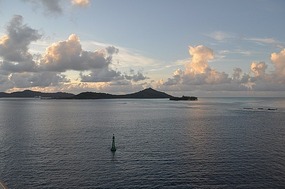
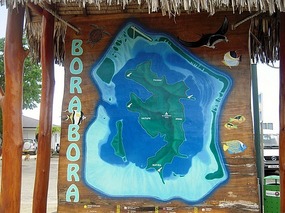
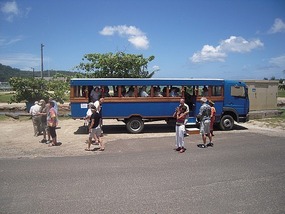
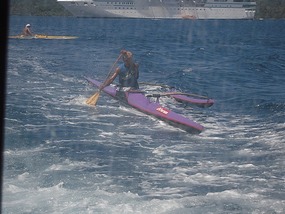














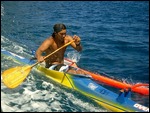
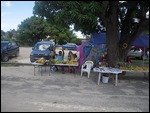
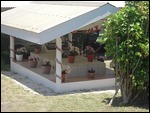
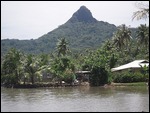
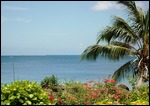
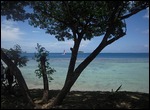
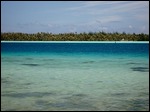

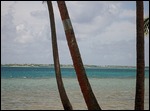
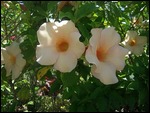
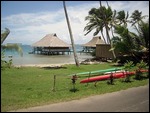
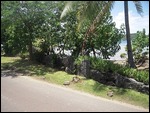
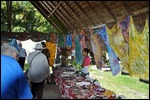
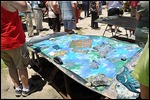


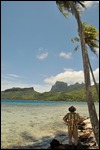
Barb
2011-02-05
Postcard-perfect pictures! Looks soooo nice and warm